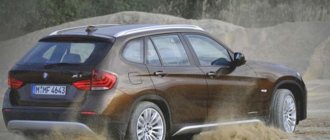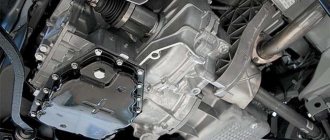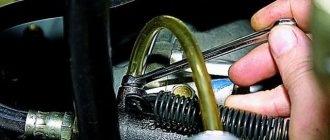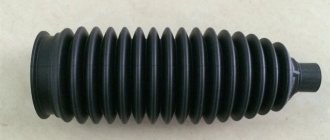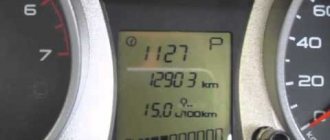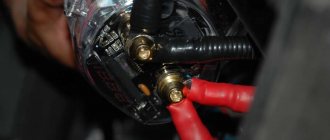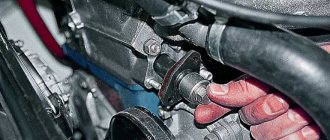Why can't you drive in neutral with a manual transmission?
Where do the roots of these disagreements come from? The fact is that in ancient times, vehicles were equipped with not very powerful engines, which overheated significantly when driving. Therefore, there was a driving style in which it was necessary to let the engine cool by reducing its speed. This was done by turning on the neutral gear.
In addition to the fact that on older engines this caused some cooling, but fuel consumption in this mode also decreased slightly. The logic here is simple. Less revolutions means less consumption. Today the situation with engine power is completely different. They are powerful and have the best cooling system.
Therefore, with a working cooling system, it is not necessary to drive in neutral to avoid overheating. Now, if the cooling does not work, then it is simply necessary to drive at a minimum speed so that the temperature does not go into the red zone. Moreover, the “heart” of a modern car is designed for a much higher number of revolutions than that of its ancestors.
Why do you need neutral gear on an automatic transmission?
Why do you need neutral on an automatic transmission if you don’t turn it on when stopping at a traffic light? More than one driver asked this question. Let's try to figure out where neutral is used, why is this position necessary on an automatic transmission? And why can’t you use neutral when stopping at a traffic light, as is done with a manual transmission?
If the automatic transmission is set to neutral, the clutches disengage and the interaction between the engine and the wheels is broken. The torque converter rotates without connecting the chassis to the engine, since the friction discs are disengaged in this position.
The main task of neutral is to unlock the wheels. Neutral on an automatic transmission is used mainly when towing a car, provided that the movement should be leisurely and careful.
True, opinions differ regarding speed. Some car owners and mechanics believe that the towing speed should not exceed 30 km per hour, others call the figure 50. The length of towing a vehicle is not designed for long “walks”. Within the city to the nearest car service station. It is better to transport the car on a tow truck.
Switching the selector to neutral is also used in car repair shops when it is necessary to unlock the wheels before repairs.
Coasting on automatic
Car owners of cars with automatic transmission are often concerned with the question: is it possible to “roll down a hill” with an automatic transmission with the engine turned off? Inclined routes in vast expanses are not uncommon, and you always want to save fuel. Is it possible to switch the automatic transmission lever to the neutral position and vice versa while driving? What happens to a car if it is allowed to coast?
Read
Which is better and more reliable, CVT or automatic?
If, while driving, you move the automatic transmission lever to position N and continue driving, the automatic transmission components will not receive oil in the required quantity, leading to a change in pressure and will be forced to rotate dry. This is harmful for rubbing units, which, subject to increased friction and heat, will quickly fail.
If you turn on mode D while the car is rolling down a hill, you can “kill” the clutch pack, since at this moment there is a strong push from the oil pump. This is especially dangerous for the torque converter, which provides transmission fluid pressure.
You should coast only with the lever in D position, with the gas pedal released. Then there is no need to change gears.
Stopping at a traffic light
Neutral is provided not only on automatic transmissions, but also on manual ones. Before we talk about why neutral is needed on an automatic transmission, let’s remember the mechanism of operation of this transmission.
Read
Reasons for delays in shifting gears in automatic transmissions and ways to eliminate them
When the handle is moved to position D (drive) on the automatic, the oil pump begins to pump pressure into the valve body, while the solenoid opens and provides pressure, under the influence of which the friction discs are compressed, connecting both shafts. The car is capable of moving. The driver releases the brakes and drives away.
But then the driver stops at a traffic light. If you move the lever to the neutral position N, the clutches open, the clutches close, and the shafts are separated. A few seconds pass and the driver switches gears to D again. Having driven 100-300 meters, he again encounters a traffic light. The process must be repeated. With such frequent changes in modes, the box simply cannot withstand the load and will quickly fail.
It is more correct, when meeting a traffic light, to leave the automatic transmission in driving mode, pressing the brake, and holding the pedal until the green light turns on. In mode D, the torque converter continues to build up pressure, and the gearbox components are thoroughly lubricated with transmission fluid. If you switch the gearbox to neutral while stopping, the input and output shafts will open, the pressure will drop, the oil will flow from the gearbox components, and the parts will no longer be lubricated. The next transition to movement will be stressful for the box and its components. It will be forced to restore pressure, unnecessary operations will occur, which lead to rapid wear of parts.
Read
What are automatic transmission clutches and how to replace them yourself
Likewise, when the car is stuck in a traffic jam, there is no need to change gears frequently. Maintaining D gear will allow the vehicle to maneuver better in traffic. It’s another matter if the street, as drivers say, is at a standstill, that is, there is no traffic at all. In this case, it is permissible to park the car and turn off the engine. In a long traffic jam, it is also possible to use a neutral position.
In the parking lot
There are situations when the machine has problems with the parking position. Rarely, but still. In this case, neutral on an automatic transmission with a handbrake will help out. You can park the car by moving the gearbox lever to the neutral position N. The handbrake will protect the vehicle from involuntary movement. Then, when you need to drive again, the driver will need to depress the brake pedal before starting the engine.
Coasting safety
Next, it’s worth speculating about how safe it is to coast. The Rules have a definition of driving safety, which boils down to the fact that you need to drive correctly in order to avoid accidents. There are three ways to maneuver in neutral that will help avoid an accident:
- Changing the direction of movement by turning the steering wheel;
- By braking with both the service brake and the engine (by releasing the gas pedal);
- Increasing speed and pressing the gas pedal.
Driving in neutral is usually uncontrollable and consumes more resources
Automotive experts say that driving in neutral with an injection-type engine usually consumes a significant amount of gasoline, the amount of consumption is much greater than when the car is coasting. Most car enthusiasts often confuse these concepts. There is no need to use the gas pedal while coasting. The car will move in gear, and the engine speed will gradually decrease.
In this case, gasoline will stop flowing into the cylinders automatically. While moving in neutral gear, the engine will run at idle speed, while it will begin to consume fuel, and when coasting without the gas pedal, almost no fuel is supplied. Also, coasting in gear can partially save the oil from burning out on the cylinder walls, which will increase engine life.
Acceleration is not possible
The driver can use the brakes or turn the steering wheel at any time. But to speed up (often you need to speed up to avoid an accident) will no longer work, because you need to engage the gear and press the gas pedal to the floor, and this is a waste of precious time, when not even a second, but a fraction of a second matters.
As a result, neutral gear does not allow you to use all three methods in order to avoid an accident. This may be tantamount to the fact that the car simply does not have a brake pedal or steering wheel. This way, it will probably be clearer for those drivers who want to travel as safely as possible.
Saving gasoline on a manual transmission: is it realistic?
I myself drive a manual car, and I set out to start saving gas as much as possible, because I have to drive quite a lot. I have tried a lot of recommendations on this matter, and I will share with you only those that have worked for me personally.
For example: when I bought a car in April 2021, 92nd gasoline cost 37 rubles per liter. Today, the price is already more than 43 rubles per liter , and the number of kilometers a car travels to fill up at the usual cost is gradually decreasing.
Today I can say for sure: saving gas on manuals is real, and from the moment I tried various recommendations and began to apply the most effective ones, my fuel costs decreased by about 10% .
Considering that monthly gasoline costs amount to 5,000 - 6,000 thousand rubles, I started saving about 500 rubles per month, which is equivalent to 12 liters of gasoline, which I can travel an additional 120-130 kilometers monthly, thanks to the savings.
How to brake correctly with manual brakes
Summarizing the above, we can say that it is safest to brake with the gear engaged. This is the so-called combined braking, which saves fuel and prevents the wheels from blocking. The latter, of course, is more relevant for older cars that are not equipped with ABS. The engaged gear also allows you to have a reserve of traction, which can be useful when accelerating or braking the engine.
It is advisable to engage neutral gear only when the car is completely stopped, while proper braking is carried out in gear until the car comes to a complete stop.
Automatic transmission modes
Before we begin to understand the essence of neutral on an automatic transmission, let’s remember what gears exist in modern automatic transmissions.
In most modern car models with an automatic transmission, there are 5 positions, marked with letters on the operating panel next to the selector lever.
- The main position of the gear selector in automatic transmission, which ensures the vehicle moves along the road, is D, or Drive;
- Parking position – P stands for Turns on when the vehicle stops;
- Neutral mode N, or Drivers nicknamed it neutral. We will talk about it in more detail below.
- Reverse gear is marked with the letter R, which means Reverse.
- OVERDRIVE transmission, marked on the panel with the letters O/D. Not available at all checkpoints. On five-speed automatic transmissions, overdrive can be turned off by simply pressing the button.
Read
How to operate an automatic transmission
Coasting in neutral gear with automatic transmission
Among car owners of cars with automatic transmissions, there are often those who like to experiment with switching the selector to neutral. In most cases, this need arises during long stops in heavy traffic or when coasting down a hill. Former manual drivers get bored with keeping their foot on the brake, and they engage neutral gear on the automatic transmission.
When practicing this option of driving a car, the automatic transmission becomes unusable much earlier than its intended life. Signs of an automatic transmission malfunction are jolts and jerks when starting to move from a stop and while accelerating.

